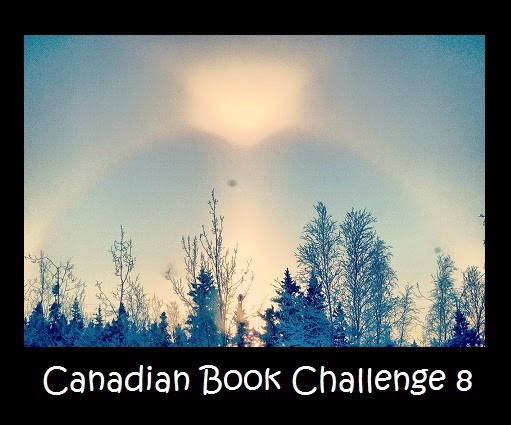 The Moon-Spinners by Mary Stewart ~ 1962. This edition: Hodder, 1964. Paperback. 264 pages.
The Moon-Spinners by Mary Stewart ~ 1962. This edition: Hodder, 1964. Paperback. 264 pages.
My rating: 9/10
I don’t know what it is – perhaps the snowy weather and the early dark evenings – but this book completely hit the spot with me a few nights ago, following through to the next day as I surreptitiously raced to finish it off in between my proper occupations.
Maybe the appeal comes from the sunny setting – the Isle of Crete at Easter, mountains alive with wildflowers – or possibly just the perfectly adorable love interest of our intelligent heroine – he’s slightly mysterious, rather handsome, charming even on his bed of pain, plus he throws himself wholeheartedly into the fray-of-the-moment, particularly if it’s to avenge damage done to his lady-love.
It certainly doesn’t hurt that The Moon-Spinners is quite beautifully written for its genre, in what I’ve come to realize is Mary Stewart’s trademark detailed travelogue style. It assumes a certain degree of intellectual and general knowledge among its readers, and refuses (for example) to reference in-text literary allusions, assuming our familiarity with them, something I always appreciate when done in an appropriate fashion, as a natural part of the narrator’s voice.
The action scenes were relatively short, though no more believable than any of Stewart’s other escapades, and I found I managed to get through them with only a raised eyebrow, not an outright snort of indignation. Let’s see, now. The heroine is attacked once with a knife and once with a fish spear (the spear episode is while in the water, of course, with the heroine scantily attired in her underthings), and she is present while bullets fly about willy-nilly but ultimately harmlessly, and she manages to bring the chief villain to grief at the very end with a spur of the moment intervention. There are two successful murders (well, perhaps more of the lost-my-temper manslaughter-type murders versus deliberate planning) plus at least one attempted murder, all in just the first few days of what was supposed to be a restful botanizing vacation.
Stewart gets the flowers right, and includes a clever Linnaean word-joke or two which I greatly appreciated, being of the horticultural persuasion myself. The whole novel is packed full of heart-racing action and instant romance, which keeps things clipping right along. The side characters – the heroine’s older cousin, the hero’s local-boy sidekick and charming younger brother – are a fabulous addition to the story, and allow for an abundance of humorous repartee. Even the surviving villains are quite a lot of fun, if you’ll forgive my using “fun” in the same breath as “murderous villain”. One is prone to violent loss of temper, the other tiptoes around anything messy with faint disdain – “Well, I’d hate to have to kill you, but you leave me no choice. Oh, better yet, I’ll leave it up to my brutish sidekick here to deal with you. I just don’t want to know!” Together they make a diverting team, in every sense of the word. The murderees themselves are unlikable thug types, so we don’t shed too many tears at their demise.
What else can I say? Loved it. The best Mary Stewart I’ve read yet, though My Brother Michael comes close. (Must also post some thoughts on that one, some day.)
So, the story.
It was the egret, flying out of the lemon-grove, that started it. I won’t pretend I saw it straight away as the conventional herald of adventure, the white stag of the fairy-tale, which, bounding from the enchanted thicket, entices the prince away from his followers, and loses him in the forest where danger threatens with the dusk. But, when the big white bird flew suddenly up among the glossy leaves and the lemon-flowers, and wheeled into the mountain, I followed it. What else is there to do when such a thing happens on a brilliant April noonday at the foot of the White Mountains of Crete; when the road is hot and dusty, but the gorge is green, and full of the sound of water, and the white wings, flying ahead, flicker in and out of deep shadow, and the air is full of the scent of lemon-blossom?
Lovely young Nicola comes on holiday to a remote village in Crete. Arriving a day early for a planned rendezvous with her cousin, she wanders into the hills and is assaulted by a knife-wielding Greek; he then takes her to a hut in which she finds a wounded Englishman, Mark. Much swearing to secrecy results; the hiding-out is because Mark’s fifteen-year-old brother has been kidnapped by a gang of thugs, one of whom shot Mark and left him for dead; Mark and Greek pal (Lambis) have realized that killer is now out searching for the not-quite-as-dead-as-thought Mark, to finish him off. A deadly game of cat-and-mouse keeps tension high as the various characters dash (or limp) from nook to cranny to shepherd’s bothy to niche-in-rock-cliff to ancient temple.
After spending the night nursing Mark, Nicola reluctantly goes off down to the village, plays all innocent, and sleuths away like mad. The small hotel where she is booked to stay is run by an oddly assorted partnership. One is a local man, Stratos, returned from years away in England with a nest egg which he is investing in the hotel; the other is his English partner, Tony, a fabulous cook , darling – and also bar-man and waiter and general manager. Tony is much given to gushing extravagances of speech; his dialogue is well-peppered with italics. I wonder rather if Mary Stewart is trying to portray something more than personal eccentricity here; if this novel were a few decades older Tony would be the quintessential “catty gay guy” we see so frequently in contemporary chick lit. As it is there are one or two possibly double entendre references to Tony not being the heroine’s type, and her older cousin Frances, a sophisticated type herself, is quite catty in regards to Tony, calling him “Cedric” after the literary Little Lord Fauntleroy.
Anyway, Nicola snoops about, discovers that all is not as it seems in this peaceful little village, identifies the villains, discovers the fate of the kidnapped boy, foils the nefarious plottings of the gang of villains, and finds true love. This takes several hundred pages, but they are filled with incident and description and clever conversation and in general are a pleasure to read. A good read indeed, completely effortless and a fabulous diversion from the onset of the Canadian winter.
Oh, and the “moon-spinners” of the title. I thought at first this was a reference to the Cretan windmills, as these are a feature of almost every one of this novel’s cover illustrations I’ve seen. You know, round, like the moon; spinning, because they’re windmills. But though a windmill features importantly in the narrative – hence the illustrations – the moon-spinners referred to are something quite different. Here is Nicola, telling their story:
They’re naiads – water nymphs. Sometimes, when you’re deep in the countryside, you meet three girls, walking along the hill tracks in the dusk, spinning. They each have a spindle, and onto these they are spinning their wool, milk-white, like the moonlight. In fact, it is the moonlight, the moon itself, which is why they don’t carry a distaff. They’re not Fates, or anything terrible; they don’t affect the lives of men; all they have to do is to see that the world gets its hours of darkness, and they do this by spinning the moon down out of the sky. Night after night, you can see the moon getting less and less, the ball of light waning, while it grows on the spindles of the maidens. Then, at length, the moon is gone, and the world has darkness, and rest, and the creatures of the hillsides are safe from the hunter, and the tides are still . . .
Then, on the darkest night, the maidens take their spindles down to the sea, to wash their wool. And the wool slips from the spindles into the water, and unravels in long ripples of light from the shore to the horizon, and there is the moon again, rising above the sea, just a thin curved thread, re-appearing in the sky. Only when all the wool is washed, and wound again into a white ball in the sky, can the moon-spinners start their work once more, to make the night safe for hunted things . .
Worth reading the book, just for the bits like that. I’m liking Mary Stewart more and more!
One more note. Disney made a 1964 movie based on this novel, starring Hayley Mills. It sounds like “loosely based” is more accurate; descriptions of the Disney production show that the plot diverges widely from Mary Stewart’s crisp thriller. Apparently no expense was spared in the making of the film, which was filmed on location in Crete, with Disney rebuilding a war-damaged village and engaging local people as background players. I’ve not seen it myself, and from the sounds of the plot changes, would not find the Disneyfied version of the story terribly appealing, but I would like to see the physical setting. Has anyone both read the book and seen the film? If so, would love to hear your thoughts!








I can’t remember what came first. As a teenager I saw the movie and read the book. I always liked Haley Mills and enjoyed the movie, but truly don’t remember how the plot varied from the book. Compared to some of her other books Moon Spinners seems like a younger heroine (My Brother Michael felt more mature), but it was a fun thriller-romance.
Meant to comment on an earlier post about Ray Bradbury. I live in Waukegan, Illinois, his hometown and he remained involved with the library here his whole life, bequeathing his papers to the library. Met him on one of his visits and he signed many of his books for the audience. Also just finished reading Fahrenheit 451, which even after all this time feels eerily prescient and effective.
Hello, June. It sounds like the movie differs quite a lot from the book. I read a plot description of the Disney production, and in the movie it looks like they’ve made the heroine much younger, and have turned her cousin into her aunt. They apparently arrive together to take a holiday, meet the hero while scuba diving, and are involved with a jewel theft ring which includes a wealthy villainess with a yacht. And it sounds like they’ve eliminated Tony completely. Ah, well, Disney wasn’t ever really about subtleties in their movie productions! In the case of things like this, I guess one must view them completely separately, and abandon all thought of looking for parallels. 🙂 Hayley Mills was a sweet actress, I remember enjoying her too. I wonder what ever happened to her, because I don’t really remember hearing about her after those early years of her career, when she played teenage roles.
And yes, My Brother Michael felt much more sober, with older characters. I liked both of these (Moon-Spinners and My Brother Michael) a lot.
How fortunate you are to have met Ray Bradbury! He was one of my favourite sci-fi writers when in grade school and junior high school; I read everything I could find by him, and loved even the bits I didn’t quite get at that young age. Amazing writer, and from all reports a quite wonderful man. My teen (well, almost 20 – how did *that* happen?!) son just read Fahrenheit 451, and was commenting on how excellent he found it. I should really re-read it; it’s been years. And yes, very prescient.
Like June, I saw the movie as a teenager (before I’d ever heard of Mary Stewart) and I was a big Hayley fan. I loved it. Then I discovered Mary Stewart and loved her too and read all her books (still love them, most of them). Some years ago, I decided to watch Moonspinners again, and not far in, I realised, Ooops, not at all like the book. Let’s not. I left it be a fond memory.
But I do recall the movie was fun, typical Disney adventure type in the mid 1960s. Just not the same as the book.
The Moon-Spinners is one of my favourite Mary Stewarts, right up there after This Rough Magic.
You know, I think I need to give This Rough Magic another read. It rather annoyed me first time around this summer, with all of the unlikely action scenes – they *are* rather over-the-top, don’t you think? – but now that I’ve familiarized myself with Mary Stewart’s style I might be more relaxed about just enjoying it and letting some of those quibbles go! 😉
I haven’t read the book, but the movie is currently #2 in my netflix queue. I’ll comment again after I’ve seen it.
Oh, I’d be very interested to hear your views! It does sound like Disney spared no expense in the making of the movie, and if you haven’t read the book you’ll be going in with a clean slate, as it were. 🙂
I’ve seen the movie now, and “loosely based” on the book is an accurate assessment. Nicola is traveling with her aunt (the wonderful Joan Greenwood) who records folk songs for the BBC. They arrive at the inn so she can record the village women singing the Moonspinners song, meet Mark and get sucked into the jewelry-thieving intrigue. There’s no kidnapped younger brother, or incident with a spear, but there is a character named “Lady Habib” who has a pet jaguar named Shalimar, which is so awesome, I can’t stand it. There’s also a dramatic rescue from a windmill, and a comical ride in a hearse through carnival-thronged streets. Also, the haunting song at the beginning soothed my crying puppy to sleep, so that was a plus. The movie is a lot of fun.
It does sound like a lot of fun! I think I will try to hunt it down, and view it as “just a vintage Disney movie” and try to pretend it has nothing at all to do with the book. 😉 (You had me at the pet jaguar.)
Hi, flew back from Elounda, Crete in the early hours of 31/10/15. Read the Moonspinners many times. Got rid of the film as it is nothing like the book, sadly the Nicola character should be a mature strong person with a slightly older Cousin. Really couldn’t cope with the Disney interpretation of a somewhat naive young girl and the other characters ages didn’t seem to work either.
The windmills no longer have any cloth in them, just the bottom part and some still have the wings. The islanders were persuaded to use diesel to power their water pumps, when it was cheaper; amusing they are now going back to wind power. I ate at the Taverna on Thursday-excellent food, owned by the town mayor we were told. The little harbour is the same. Went on a safari in the mountains and this part of Crete is still very much the same as the book. I think that the tourist areas are likely to be very busy in high season.
Try reading ‘This Rough Magic” remembering it was written in a very different world, not sure exactly but I was 13 in the early 70’s and it was my first adult book and I loved it.
Oh, what a wonderful comment to receive this rainy, cold morning! Thank you for this. I do believe it is time to revisit reading Mary Stewart. Her descriptions of settings are so well written one can envision oneself there; the setting in ‘Moonspinners’ was one of her most memorable, and so grand that you the chance to experience it first hand. (And I will definitely give ‘This Rough Magic’ another go. Thank you for the nudge.)
Loved both the movie and the book on their own terms. I didn’t think Hayley played much younger that the book Nicola, whom, after all is only 22. there were lots of parallels between the two, I thought. Had a major crush on Mark, played by Peter McEnery. The movie had an awesome cast. Pola Negri played Madame Habib!
This was the first Mary Stewart read and still a favorite. As you say, the minor characters are all wonderful. Nicola is a satisfying heroine and the scenery descriptions make one want to pack up and go see it. In fact, my mother and I went on a Madam Will You Talk pilgrimage last fall which we really enjoyed.